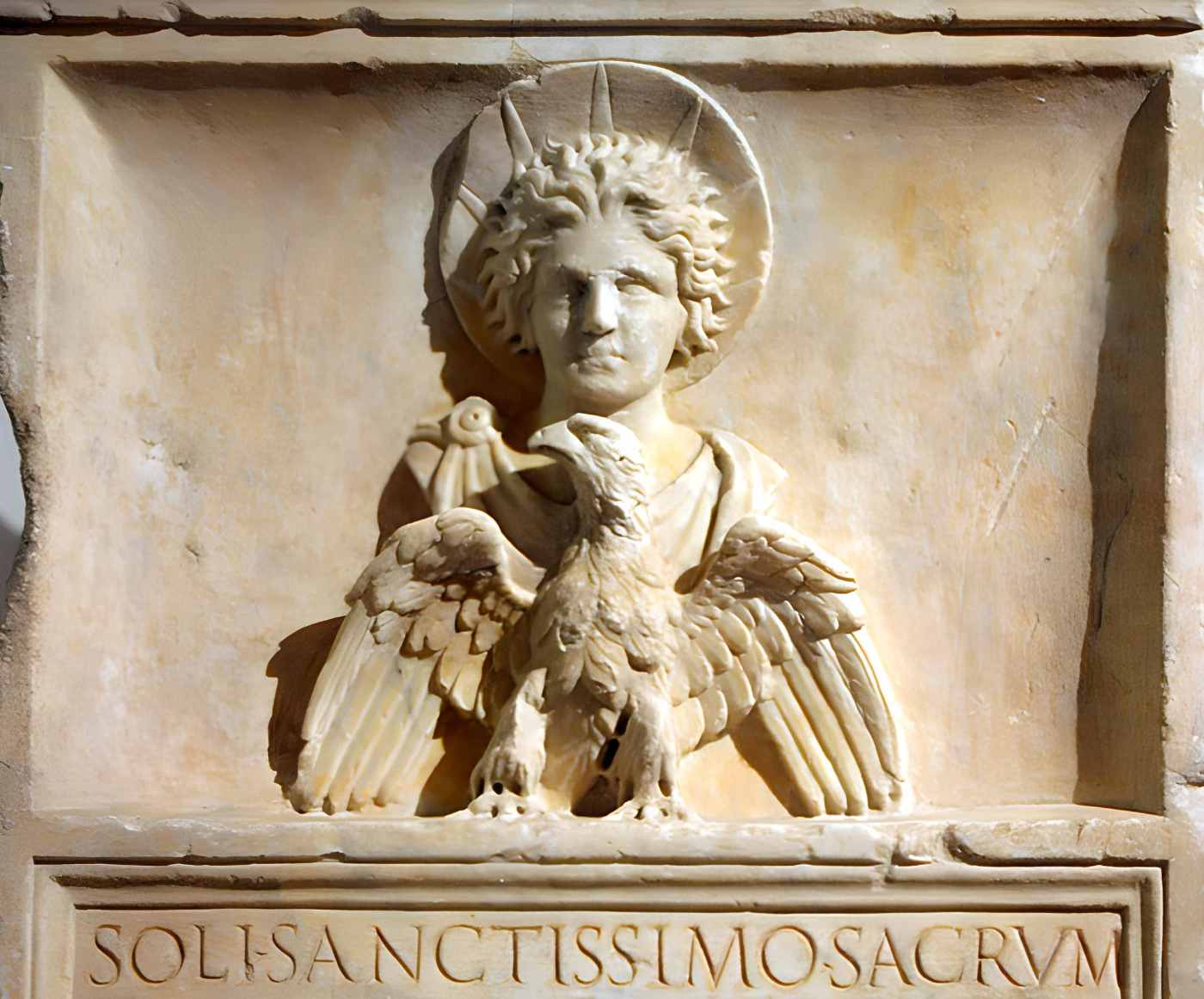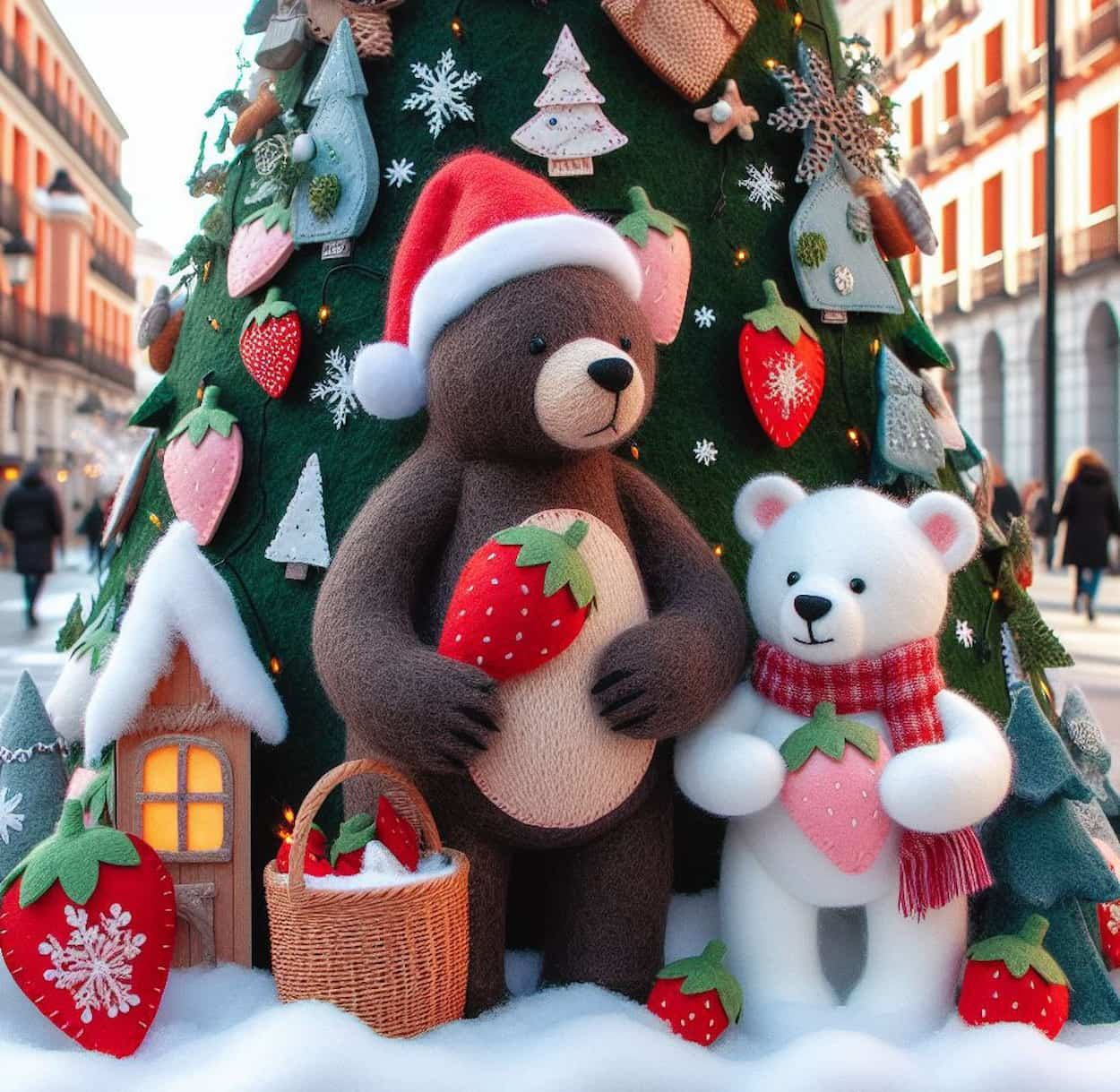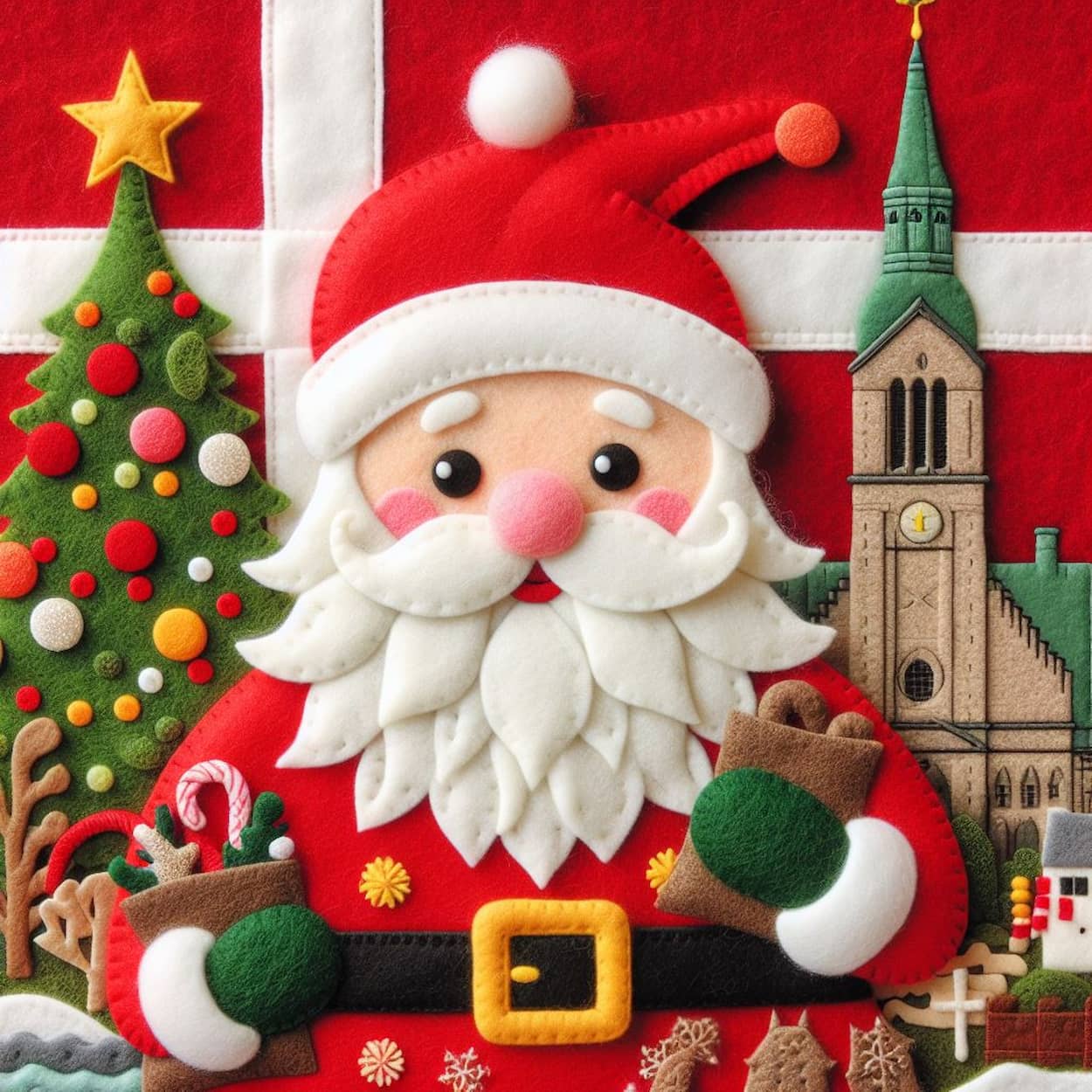Greek Christmases are known for their festivity, as well as their customs and decorations. The ‘Great Blessing of Water’ announces the completion of the fourteen-day celebration that began on Christmas Eve and continues until Epiphany (6 January). Decorating boats is one Greek custom that represents the hope of seeing family who are far away. Baking Christopsomo (Tsoureki), also known as Christ bread, a circular loaf that is a part of the Greek Christmas feast, is another popular ritual. Saint Basil, also known as Agios Vasilis, or Santa Claus, makes his annual New Year’s Day appearance. As always, these customs differ by city.
-> See also: 48 Countries That Celebrate Christmas Widely
Christmas Traditions in Greece
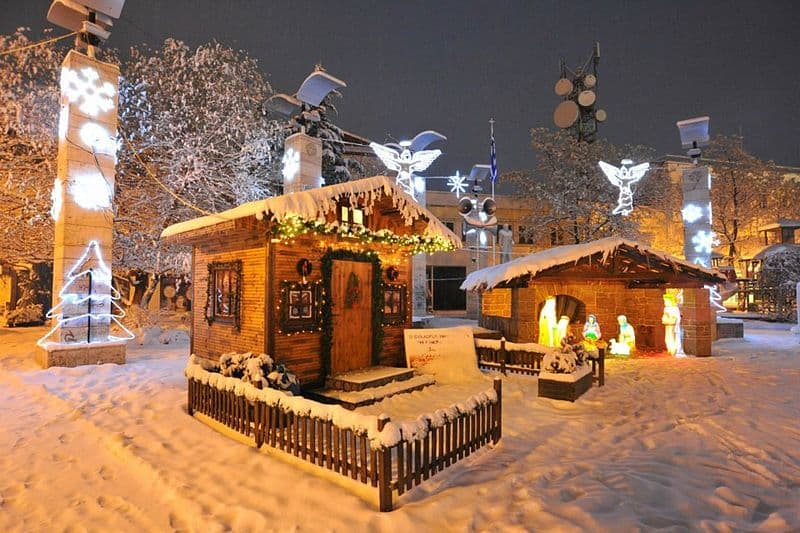
With 76% of Greeks identified as Christians (higher than most European countries) and 81% of them identified as Orthodox, Greek Christmas traditions are a bit distinct from those of other countries. Among the most well-known Greek Christmas traditions are the following:
- Christmas Boats (Karavaki) and Trees: You may find both of those traditions, especially in the island towns of Greece. Greek children and spouses would traditionally decorate wooden boats to welcome home their husbands and fathers after a long day at sea. The custom continues to this day.
- Kalanta (Christmas Carols): Singing Greek Christmas songs, or “kalanta,” on Christmas Eve is a tradition in Greece (especially among youngsters). The kids get candy, dried fruits, and spare coins after wishing their neighbors a happy holiday. Essentially, it’s the Greek equivalent of Christmas caroling in the United States.
- Greek Christmas Delights: The Greeks make classic treats like almond kourabiedes and syrup-dipped melomakarona. At Christmastime, you can taste sweet treats like rizogalo in Greece as well as baklava (a Turkish dessert).
- Gift-Giving: Greeks celebrate New Year’s Day—the feast day of Agios Vasilis, also known as St. Basil or Basil of Caesarea—by exchanging gifts. This figure represents Santa Claus in Greek mythology.
- Kallikantzari Tease Villages: Little naughty kallikantzari, or hobgoblins in English, would emerge from underground to cause mayhem over the 12 days of Christmas, according to Greek folklore. In order to vanquish them, priests would (and still do) visit people’s houses on January 6, the Epiphany, and sprinkle holy water on them. The creature is also known as Kallikantzaros.
History of Christmas in Greece
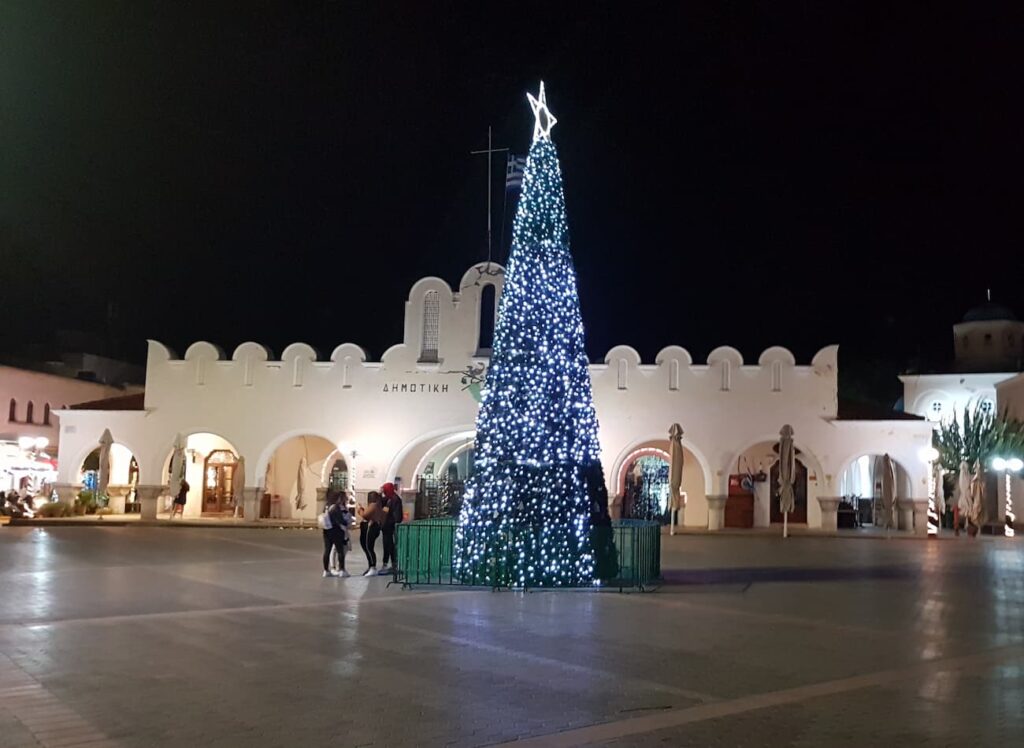
The 19th-century popularity of St. Nicholas, also known as Sinterklaas, led to the expansion of the Christmas tree and gift-giving traditions. The Greek Independence War was the catalyst for the spread of the Christmas tree tradition in Greece. In 1834, King Otto of Bavaria was the first person from his realm to adorn a Christmas tree in Greece. However, there was a delay in the widespread adoption of the new approach. Christmas trees in Greece didn’t become popular until the 1950s and 1960s, more than a century later.
There is a long-lasting custom of pig slaughter in the domestic economy of Roumeli. According to Athanasius of Alexandria’s (d. 373 AD) “The Christmas Shoes,” the medieval Greeks slaughtered the fattened pigs on Christmas Eve. Then, their skin was flayed, salted, and spread in the sun. From this, the family received the pigskin shoes. The fat became soap, the thick parts became candles, and then the bones remained for cooking, the entrails for sausages, and the meat for cured sausages. With a good pig, the poor family would get through the rest of the winter.
Ancient Greece
There are many aspects of Christmas that may be traced back to their origins in ancient Greece. The ancient Greeks proclaimed Dionysus “Savior” and a divine “infant” when he was born in December. He was born to Zeus, ruler of the gods, and Semele, a mortal woman, as his parents in Greek mythology. The singing of Christmas carols, a practice with origins in classical Greece, is the most famous Christian ritual worldwide.
In particular, while staying on Samos, Homer wrote a string of hymns that sounded like carols with the help of a group of youngsters. Only the children of the wealthy would sing these songs in ancient Greece, where they were a sign of happiness, prosperity, and tranquility. A variety of fruits and an olive or laurel branch decorated with wool (a sign of health and beauty) would accompany children as they went door to door.
-> See also: All 15 Countries That Don’t Celebrate Christmas
The Greek Christmas Decorations

In Greece, the first Christmas tree was adorned at the royal palace when Otto of Greece (r. 1832–1862) was the king. The main customs in Greek decoration include the adornment of the Christmas tree, the depiction of the Nativity Scene or the Manger of the Horses, the Alexandrian or Bethlehem Star, the Christmas boat (the church is often symbolized as a ship), the decoration with Christmas lights, and the Christmas calendar.
The Christmas decoration with branches and fruits of trees from the local flora has its roots in Byzantine times and ancient Greece. In Byzantium, it was customary to decorate a tree in the courtyard of the house by hanging gifts on the branches for poor passersby. After the Conquest, the custom was transferred to Northern Europe, with the decoration of fir trees, and later returned in 1830, brought back by the Bavarians.
The trees are decorated even with likenesses of St. Nick himself, and the most famous of all is in the center of the important Syntagma Square in Athens. Nativity scenes can be found next to the Christmas tree in Greek houses. Located in Thessaloniki, a massive Nativity scene adorns the façade, which spans over 540 square feet and is around 50 feet in length. Advent crowns and wreaths are made from fir or leylandii greenery with four candles.
In Thessaly, Roumeli, Moria, and especially the Aegean islands, characteristic of the Christmas celebration was the continuous lighting of the fire (lasting throughout the Twelve Days) as a preventive measure against Kallikantzaros and evil spirits, and the slaughter and cooking of the pig. Those who did not have a pig would slaughter a goat or sheep. They adorned the house with cedar and wild cherry branches. They did not bathe, considering it bad luck, and always had a young boy make the first step into the house.
The Greek Christmas Cuisine

- Roasted Pork or Beef: Roasted pork or beef is served along with homemade rustic pies for the Christmas dinner in Greece.
- Lahanodolmades: Stuffed cabbage rolls in egg and lemon sauce are served on Christmas day in many areas, and the cabbage leaves symbolize the cloth that baby Jesus was wrapped in.
- Kourabiethes: Almond shortbread cookies are a popular Greek Christmas cookie that is found in every Greek home. They are left for Santa on Christmas Eve, next to the fireplace, along with a glass of scotch and a carrot for his reindeer during Christmas time.
- Melomakarona: Honey cookies with walnuts are among the best cookies in this country. They are made with semolina and filled with spices, ground walnuts, and cocoa.
- Karydopita: Syrup-soaked walnut cake is a traditional Greek cake, full of spices and walnuts, completely soaked in syrup.
- Christopsomo: Christopsomo or Christ’s bread, is a traditional Greek bread that is baked on Christmas Eve, used as a table centerpiece and eaten on Christmas Day. The bread is large, round loaves and has a flavor.
- Vasilopita: It is a traditional Greek New Year’s cake infused with the aromas of oranges and garnished with a vanilla-scented sugar glaze. It is served on New Year’s Day, which is the feast day of Agios Vasilis (St. Basil), the Greek counterpart of Santa Claus.
Places to Visit in Greek at Christmas
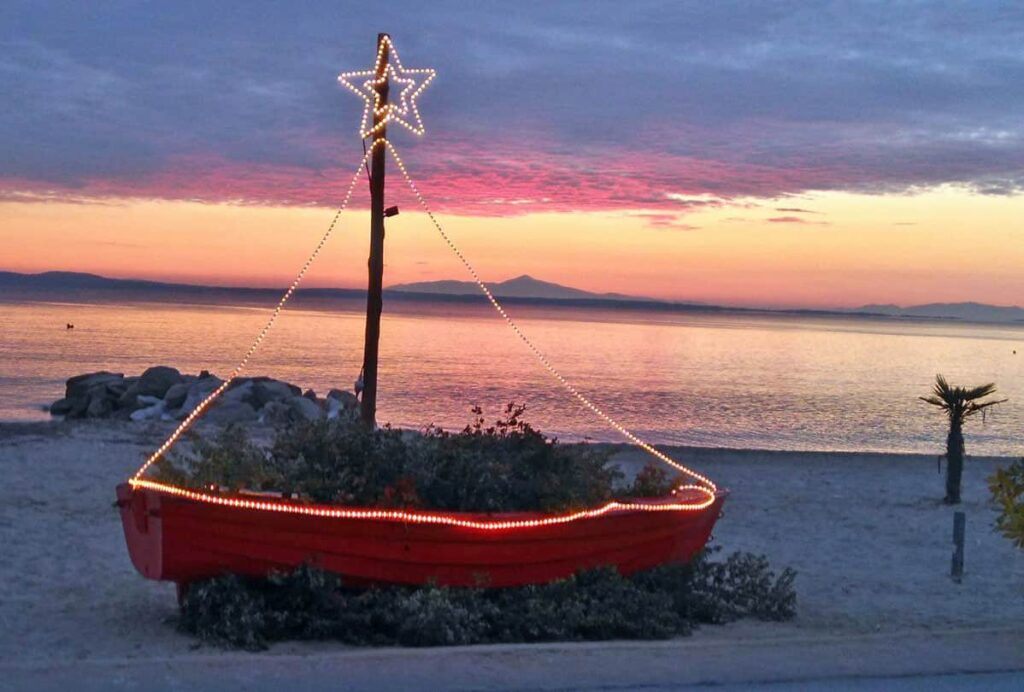
Athens
Experience the festive season in Athens, Greece’s capital city, with its lit squares and streets and local music. The glittering Christmas tree, candy stands, and many festivities all come together at Syntagma Square. The city’s mild population of 645,000 reaches a million at holiday.
Thessaloniki
Nestled in Aristotelous Square, this second-largest Greek city is renowned for its traditional painted ship, which takes pride of place, as well as its beautiful illuminations.
Agios Athanasios
Located in northern Greece, this town is a favorite Christmas destination because of its Macedonian architecture. With the first snows of winter, mountain communities become picture-perfect settings for holiday cards. There will be fir trees coated with icing sugar, clean, fresh air, and the scent of chimney smoke.
Kaimaktsalan
Northern Greece is home to the ski resort of Kaimaktsalan, a spot for winter activities. With plenty of holiday festivities, this resort is the place to spend Christmas.
Arachova
A popular Greek winter destination is the mountain town of Arachova, which lies close to Delphi. Great for holiday celebrations, the community is famous for its medieval architecture and nightlife.
Karpenisi
Located in central Greece, the mountain town of Karpenisi is a destination for winter sports enthusiasts and scenery. A variety of Christmas-themed activities are available in this forest-surrounded Greek town.
Pelion
Pelion is a peninsula in central Greece that is home to mountains and is famous for its architecture, landscapes, and sports. The peninsula is bordered by the Aegean Sea, and it hosts Christmas-themed festivities.




